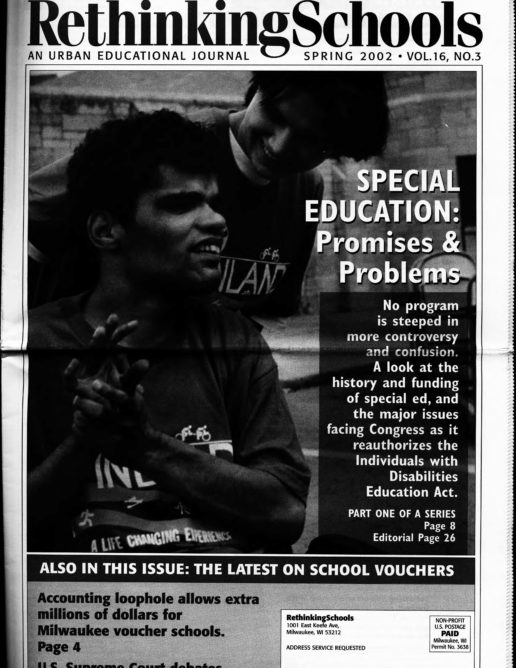Edison’s Elusive Profits
Privatization advocates are well aware that Edison’s future will have a significant impact on the overall movement by private companies to run public schools.
As Jack Clegg, CEO of Nobel Learning Communities Inc., told Business Week this past July: “If Edison makes it, it will open the floodgates.”
So far, however, Edison has been bleeding red ink. Some of the most dismal summaries come from its own reports to the Securities and Exchange Commission.
In a report filed Nov. 14, 2001, Edison notes that since the company’s inception in 1992, it has lost more than $233.5 million. Nor are the balance sheets dramatically improving. In the quarter ending last September, it lost more than $18 million. “We have incurred substantial net losses in every fiscal period since we began operations and expect losses to continue into the future,” Edison wrote in its SEC filing.
Throughout its history, Edison has projected profits in the near future – not so soon as to get caught empty-handed, but soon enough to soothe worried investors. And as the target date for profitability approaches, the date keeps shifting. For example:
- In May 1996, Edison Chairman of the Board Benno Schmidt said it would be about three years before the company would likely make a profit. (Education Week, May 29, 1996.)
- In December 1996, Edison says it doesn’t expect to see a significant profit until it reaches its goal of 25 schools in 1998. (Dec. 24, 1996 School Board News, publication of the National School Boards Association.)
- In June 1997, Edison chairman Benno Schmidt and Edison founder Chris Whittle say Edison could be profitable in about two years when the company has 50 to 70 schools (June 2, 1997 New York Times.)
- In October 1998, Richard O’Neill, an Edison vice-president says the company will be at the break-even point the following year at 75 schools, with a small profit after that. (Oct. 14, 1998 Education Week.)
- In July 2001, Whittle says Edison will turn a profit in 2005, when the company expects to have 250,000 pupils. (July 9, 2001 Business Week.)
With Edison’s floating projections, Whittle seems to be following an old pattern. A 1994 New Yorker profile on Whittle noted his tendency to inflate figures, citing as an example his boast that his publication Special Report reached 100 million readers. Gary Belis, Whittle’s former director of media relations, told the New Yorker that at Special Report, “not a week went by when someone didn’t ask, ‘Are these real numbers or Whittle numbers?'”

